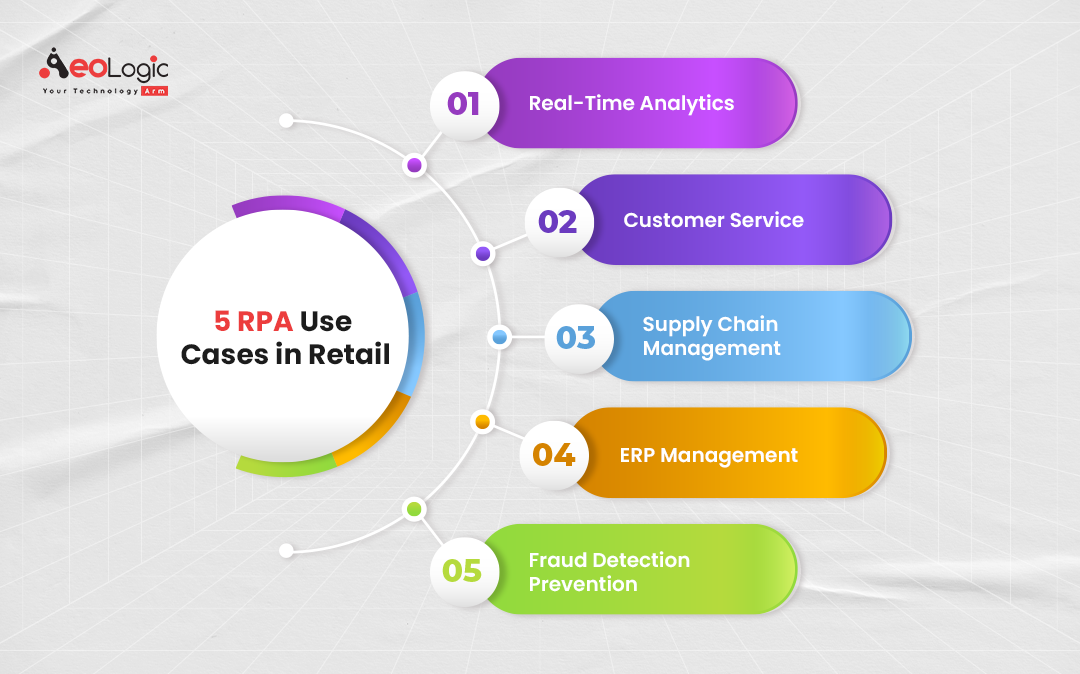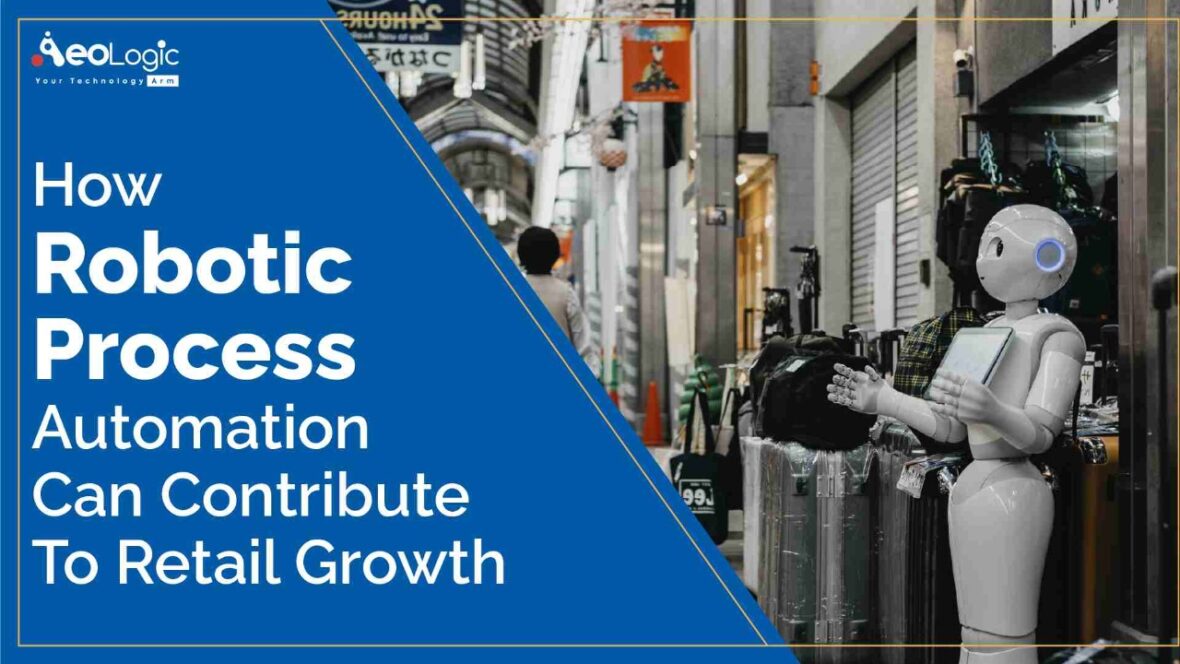RPA is a powerful technology that can help retailers boost operational efficiency and achieve greater customer engagement. It can also improve accuracy and speed up the business processes. This blog will discuss how robotic process automation can contribute to retail growth. We will also discuss what RPA is, five RPA use cases in the retail industry, common challenges, and how to overcome those challenges.
“According to a survey by Gartner, nearly 47% of retailers say that they will use robotic process automation (RPA) to improve business processes by 2020.”
If you want to get your head around robotic process automation for retail growth, Read on!
What is Robotic Process Automation (RPA)?
Robotic process automation (RPA) is a software technology that allows computers to perform tasks that normally require human involvement. It uses software robots to perform repetitive tasks. Such as entering data into systems or processing documents without any manual intervention from humans.
The goal of RPA is to improve efficiency by automating manual, repeatable activities across an organization’s enterprise systems and applications. RPA can do processes that are repetitive, such as data entry or simple business processes like invoicing. It includes accountancy, payroll, and finance processes. So, by using RPA, retailers can improve customer satisfaction, make more money, and save money on labor costs.
Also Read: Benefits of Mobile App for Your Retail Business
5 RPA use cases in the Retail Industry

Robotic process automation can help retailers achieve a competitive advantage. Because it provides tools that automate repetitive and predictable processes, which can save time and money and increase efficiency.
Here are 5 RPA use cases in retail that will help retailers grow their business:
- Real-Time Analytics
- Customer Service
- Supply Chain Management
- ERP Management
- Fraud Detection & Prevention
Common Challenges in the Retail Industry
In the retail industry, there are several common challenges that need to be addressed. Manual data entry takes up more than 80% of an employee’s time, which results in lower productivity levels at work. It also increased stress levels among employees. So, this problem can be solved by implementing RPA, which eliminates the need for manual data entry and increases productivity levels among store associates by 20%. The retail industry is one of the largest industries in the world, with over 6 million outlets spread across the globe. However, it is also one of the most challenging industries to operate in. The following are some of the common challenges faced by retail companies:
- High Turnover Rate
- A Complicated Inventory Management System
- Its complicated pricing structure
- Low Employee Engagement
- Slow Customer Service Response Time and High Customer Churn Rate.
Also Read: How Data and Analytics are Fueling the Retail Industry?
How can RPA help in the Retail Industry?
The retail industry is one of the most dynamic sectors in the world. The constant changes in consumer tastes and preferences. Competition from other retailers and increasing price pressure are just some of the factors that make the retail sector challenging.
RPA can make a huge contribution to retail growth by improving efficiency, reducing costs, and increasing customer satisfaction. So, below we have listed some of the use cases where RPA can help:
Replacing Manual Tasks with Automated Processes
Replacing manual tasks with automated processes is one of the most common use cases for RPA in the retail industry. With the increasing demand for personalized shopping experiences, retailers find it difficult to keep pace with customer expectations, which leads to high labor costs and poor service quality.
Reducing Processing Cycle Time
Reducing process cycle time is another common use case for RPA in the retail industry. It helps organizations improve their service delivery capabilities while reducing costs at the same time. RPA can be used to automate tedious and repetitive tasks such as data entry, data verification, or data aggregation. It consumes a lot of time and resources but doesn’t add any value to your business.
Also Read: The Importance of CRM in the Retail Sector
Enhancing Employee Efficiency
Another advantage of RPA is that employees can use RPA to manage their workload and reduce the time they spend on repetitive tasks. Hence, this allows them to focus on more important tasks that require a higher level of cognitive ability, such as creative problem solving or data analysis. Employees are the most valuable asset of any organization. So, to keep them engaged, they need tools and resources that help them achieve their goals quickly and easily.
The Benefits of RPA for Retailers
- RPA provides a competitive advantage by reducing costs and increasing productivity.
- Improves the customer experience by automating manual tasks that slow down customer service responses.
- It increases operational efficiency by automating repetitive tasks that take a lot of time from employees.
- It frees up executives’ time so they can focus on making the customer experience better.
- Getting rid of mistakes in business operations
Also Read: Pros And Cons of AI In Manufacturing
To Wrap
Hopefully, this blog should give you a general idea of how RPA is used in the retail sector. You can use this software technology in your business workflow system because it is a useful tool for your business. It can help you achieve your goals and desires easily.
If you want to learn more about how to successfully adopt RPA in your company, connect with Aeologic Technologies.







